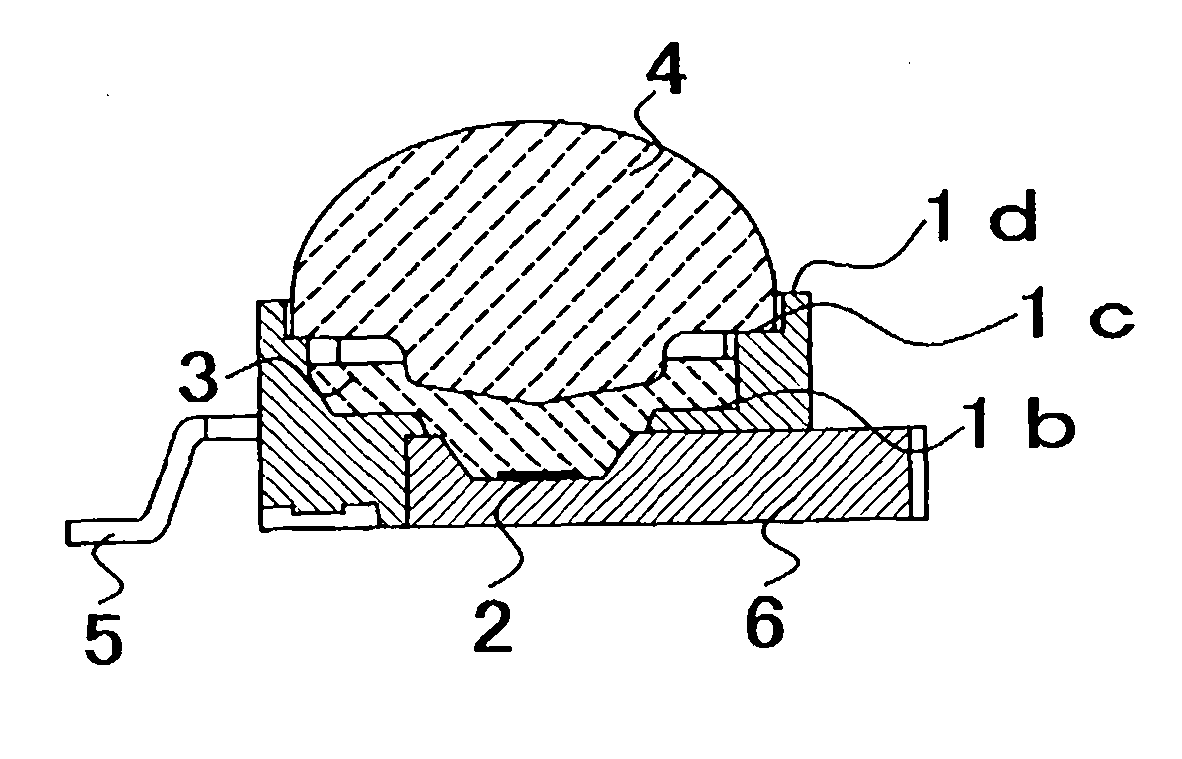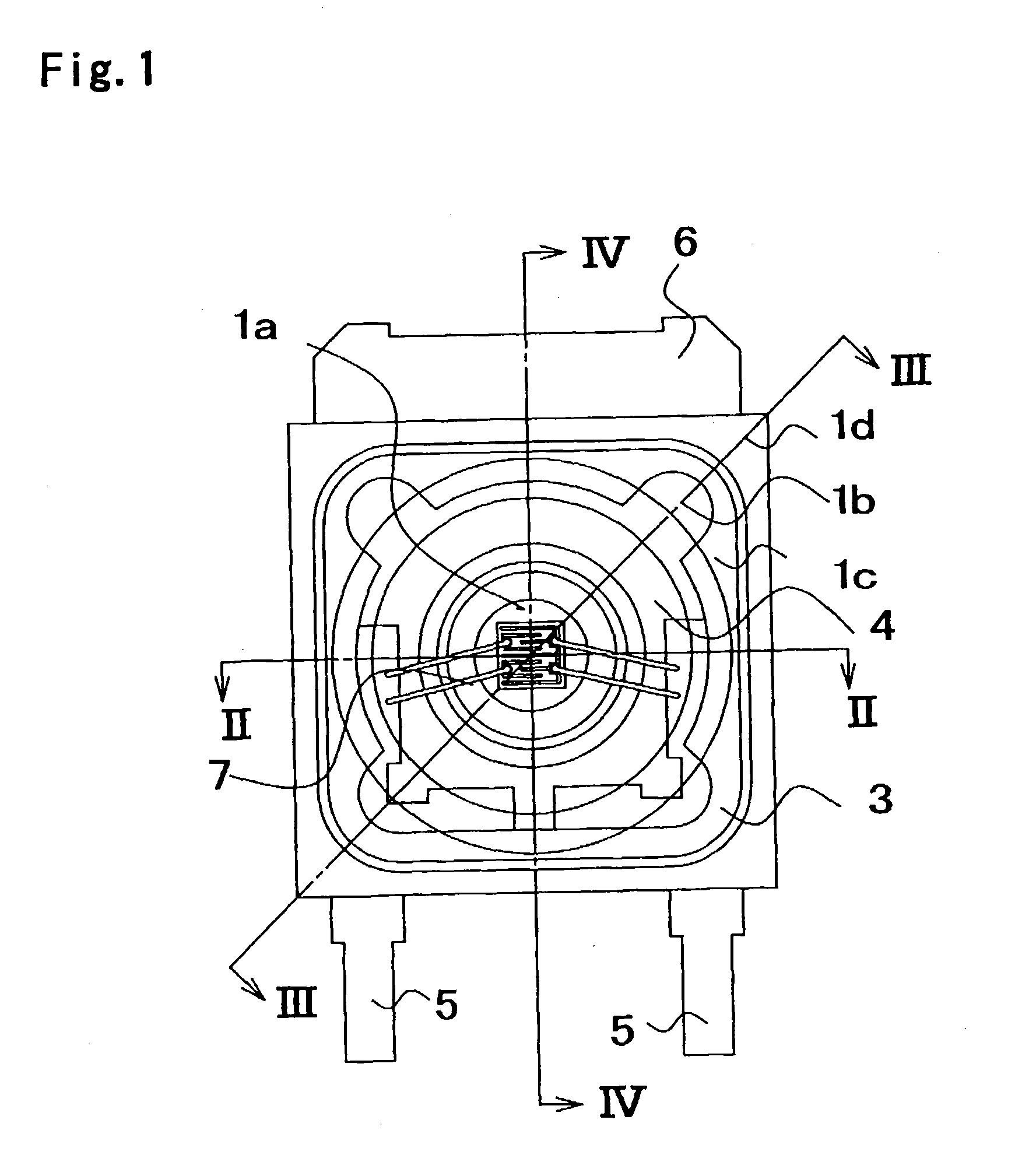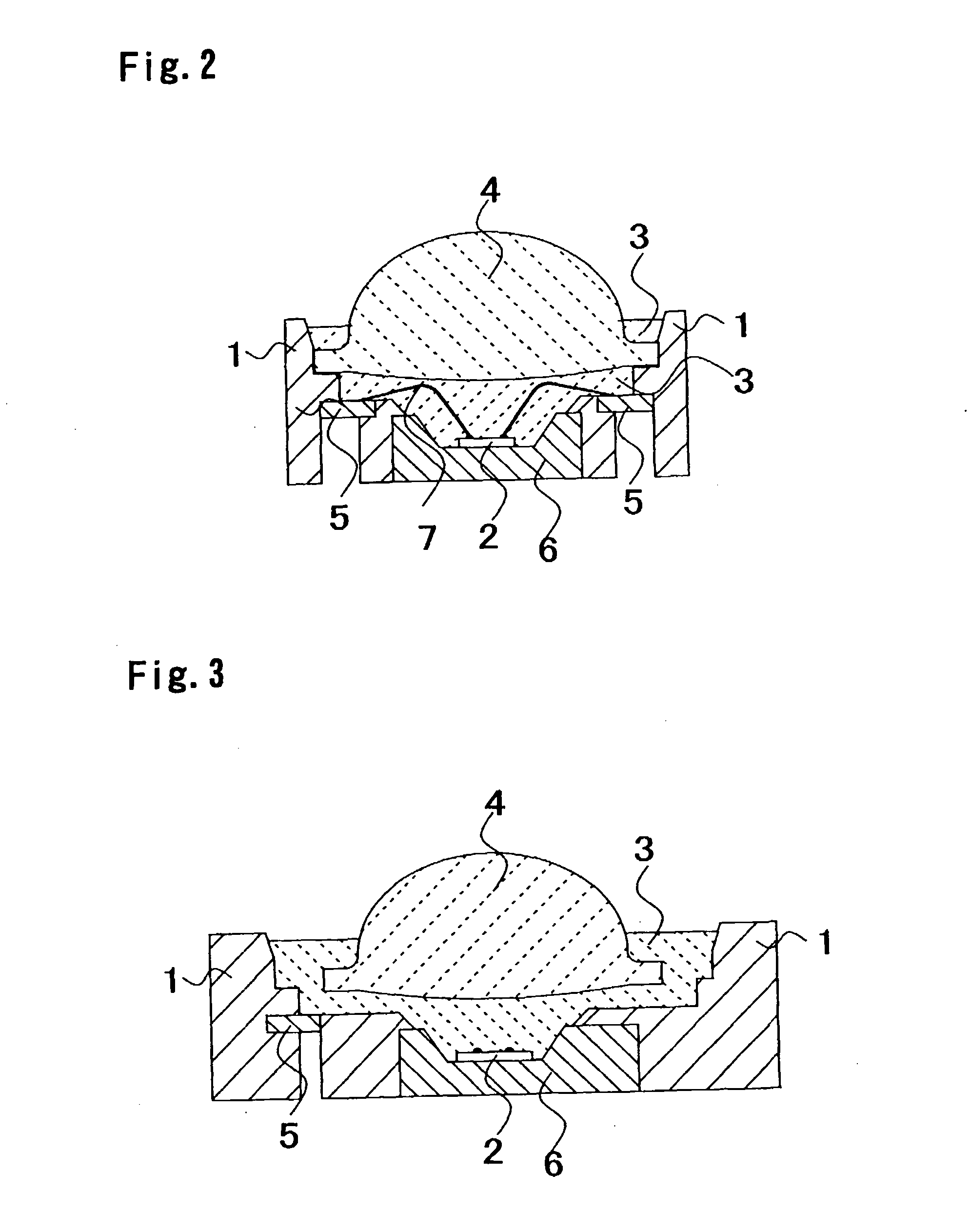Light-emitting device and process for producing thereof
a technology of light-emitting devices and processes, applied in the direction of semiconductor devices, basic electric elements, electrical apparatus, etc., can solve the problems of reducing the unable to sell light-emitting devices, and not being suitable for mass production, so as to improve the effect of removing air bubbles, improving the structural integrity of light-emitting devices, and improving the effect of air bubble removal
- Summary
- Abstract
- Description
- Claims
- Application Information
AI Technical Summary
Benefits of technology
Problems solved by technology
Method used
Image
Examples
example 1
[0128] A surface mount type light-emitting device as shown in FIG. 1 is formed. A nitride semiconductor having a semiconductor of In0.2Ga0.8N with a monochromatic light-emission peak 475 nm as a light-emitting layer is employed as an LED chip. More specifically, the LED chip can be formed by flowing TMG (trimethylgallium) gas, TMT (trimethylindium) gas, nitrogen gas, and a dopant gas with a carrier gas onto a cleaned sapphire substrate so as to laminate nitride semiconductor layers by a MOCVD method. An n-type nitride semiconductor layer and a p-type nitride semiconductor layer can be formed by changing SiH4 and Cp2Mg as the dopant.
[0129] The element structure of the LED chip has an n-type GaN layer, which is an undoped nitride semiconductor, on the sapphire substrate; a GaN layer, which is a Si-doped n-type contact layer providing an n-type terminal thereon; and the light-emitting layer having a multi-quantum-well structure with 5 sets of an InGaN layer successively interposed wit...
example 2
[0137] As shown in FIG. 10, a light-emitting device is formed in the same manner as Example 1 except for forming a cornered outline of the second front surface in a hexagon shape. This provides a light-emitting device with more effective mass production and better mountability with a higher density compared to the device in Example 1.
example 3
[0138] As shown in FIG. 11, a light-emitting device can be formed in the same manner as Example 1 except for 1) forming the outline of the second front surface and the outline of the first front surface in a polygonal shape with similar relations between them, and 2) forming the lens with a notch portion in its outline to expose corners of the first front surface. This structure provides a light-emitting device with effects similar to Example 1.
PUM
 Login to View More
Login to View More Abstract
Description
Claims
Application Information
 Login to View More
Login to View More - R&D
- Intellectual Property
- Life Sciences
- Materials
- Tech Scout
- Unparalleled Data Quality
- Higher Quality Content
- 60% Fewer Hallucinations
Browse by: Latest US Patents, China's latest patents, Technical Efficacy Thesaurus, Application Domain, Technology Topic, Popular Technical Reports.
© 2025 PatSnap. All rights reserved.Legal|Privacy policy|Modern Slavery Act Transparency Statement|Sitemap|About US| Contact US: help@patsnap.com



